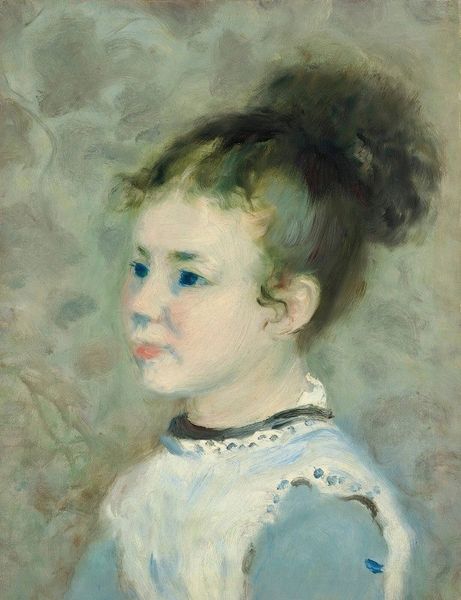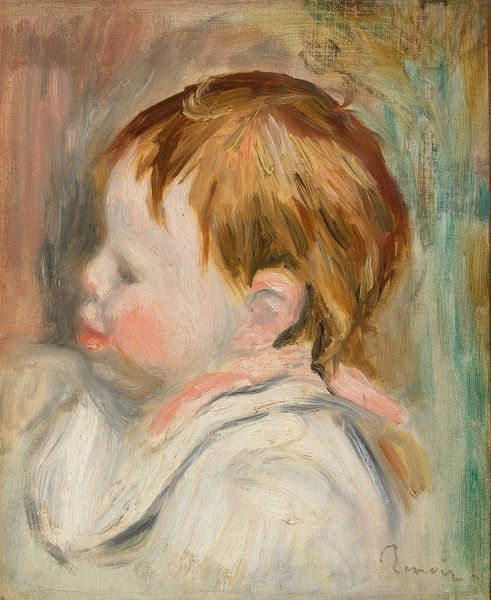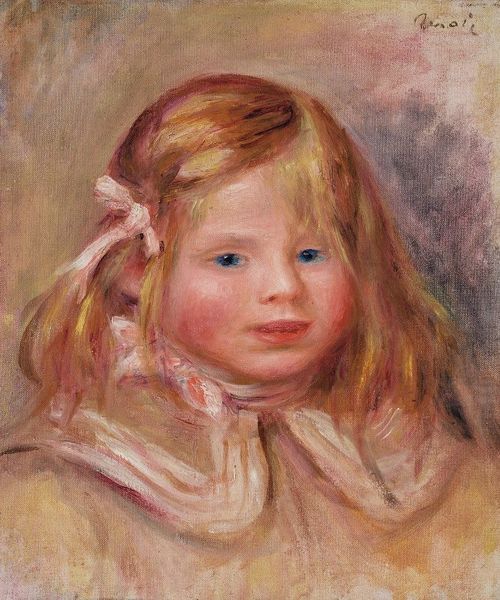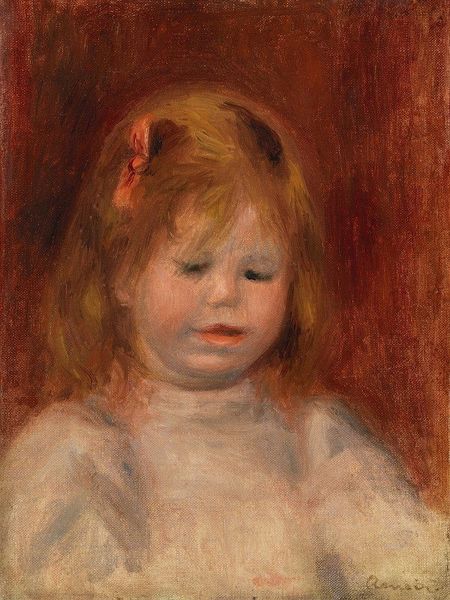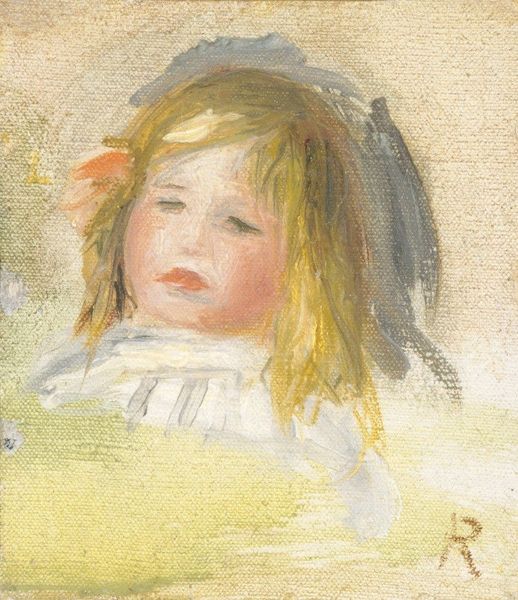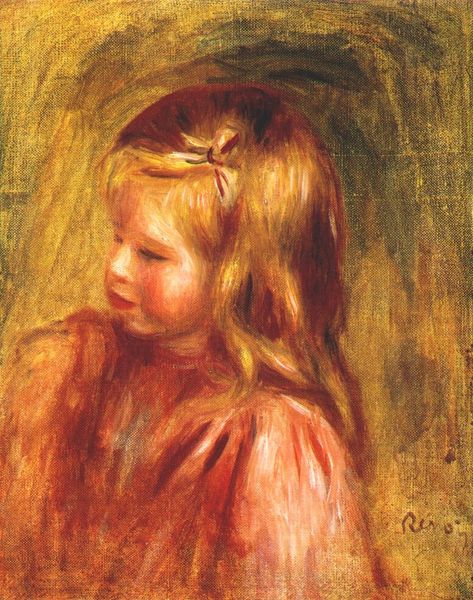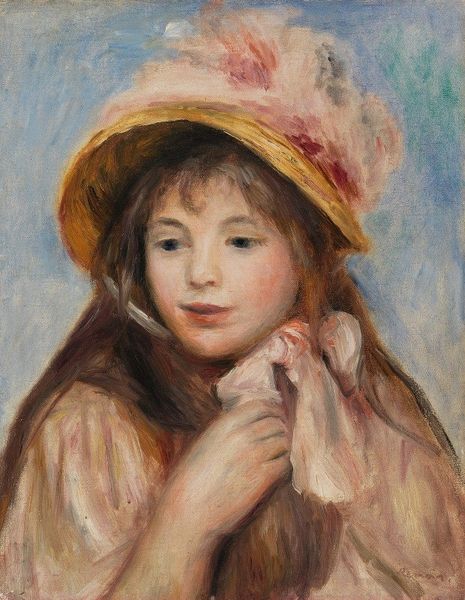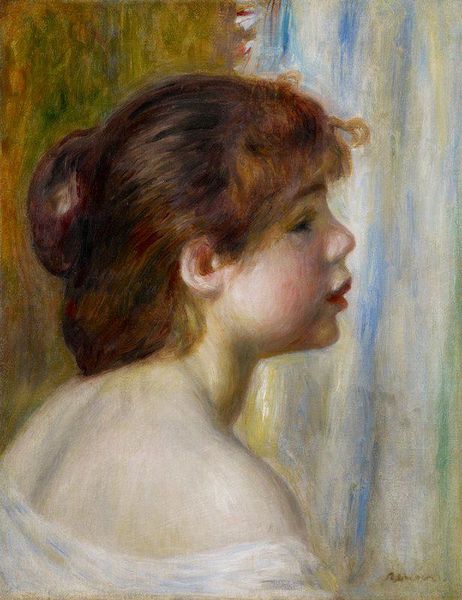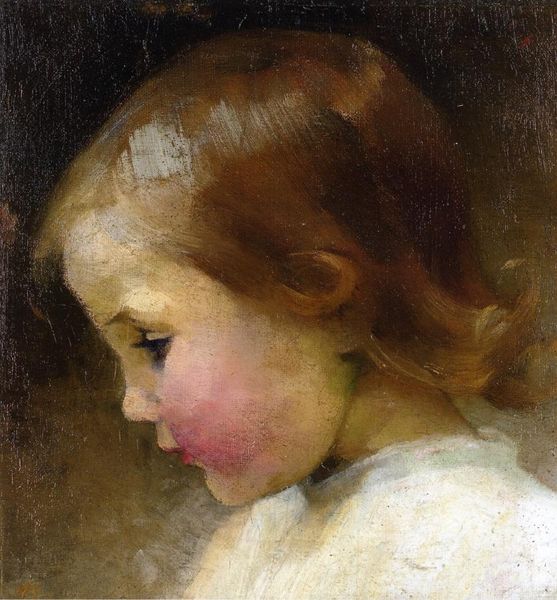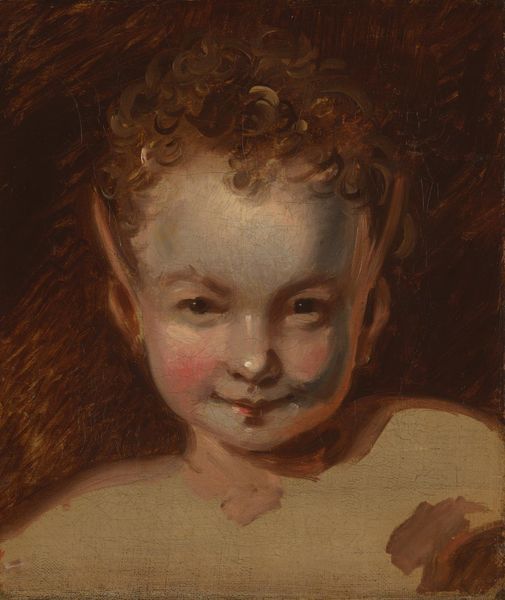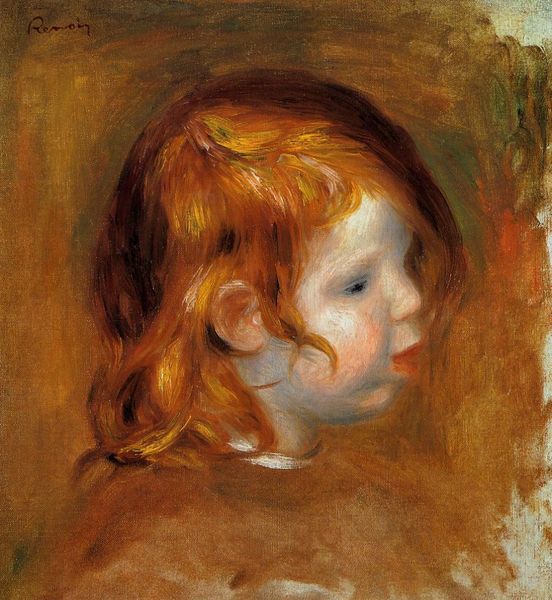
Copyright: Public Domain: Artvee
Editor: Here we have Renoir’s "Jean Renoir enfant," painted in 1896. It's an oil painting, and it strikes me as a particularly intimate portrait, capturing a really fleeting moment of childhood. What do you see in this piece? Curator: Absolutely. Beyond its Impressionistic charm, I see this as a potent reflection of the evolving social status of children in the late 19th century. Renoir wasn't just painting his son, but also participating in a broader cultural shift that began to view childhood as a distinct and valuable phase of life. Notice how the soft focus and delicate brushstrokes almost idealize Jean. Editor: I hadn’t considered that. So, it's not *just* a loving father capturing his son's likeness? Curator: Precisely. It’s crucial to consider the politics of representation here. Renoir, as a privileged member of society, is also framing a narrative. How might the representation of children from less privileged backgrounds differ during this period? This image, while beautiful, implicitly reinforces certain social hierarchies. Also consider Renoir's male gaze in the context of gender and portraiture: How is Jean being presented to the viewer? Editor: That makes me rethink the painting entirely. I was just seeing a sweet picture. Curator: Exactly! Now consider the work in relation to feminist theory. Does the intimacy risk sexualizing a young child by today’s standards, and, if so, should the lens through which we view this work impact where and how the work should be shown? Editor: I see what you mean. I think I'm left with a lot more questions than when I started. Curator: And that's a great thing! Hopefully viewers will appreciate how unpacking the layers of meaning—the social context—actually enriches, rather than detracts from, the emotional impact of this painting.
Comments
No comments
Be the first to comment and join the conversation on the ultimate creative platform.
